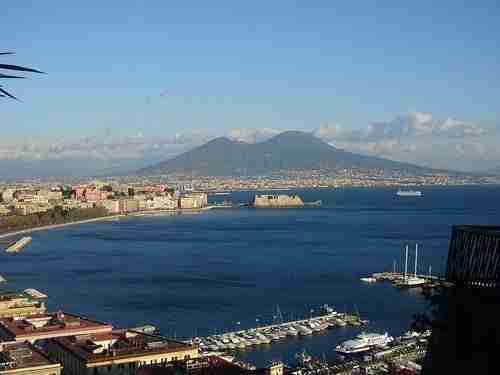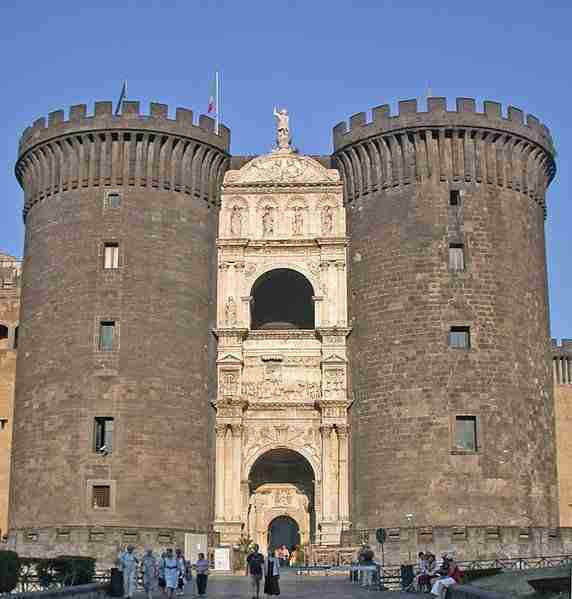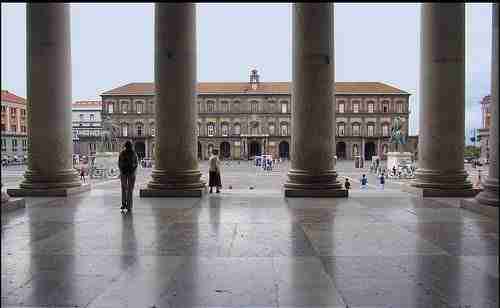
Although Naples is the third-largest city in Italy, it is not as well known as its more popular neighbors to the north, like Rome, Florence, and Venice. That’s why we’ve brought in guest poster Gabriella Sannino to tell us the basics about her adopted hometown.
Naples 101
As an Italian citizen, I love writing about my country. What’s even more exciting is when I get to write about Naples. Granted, I wasn’t born there – I was actually born in Pistoia, Tuscany. But Napoli will always be the place I consider home. It gives me great pleasure to be able to share the background of this beautiful city with you.
As one of the oldest cities in the world, Naples has not only had an architectural influence on many other cities in Italy but upon other cities throughout Europe. The chief city in the southern or Mezzogiorno region of Italy, Naples remains the capital of the Campania region and the third-largest city in Italy.
A Brief History of Naples

The Greeks, who jointly colonized both Ischia Island and the Bay of Naples in the eighth century B.C, founded Neapolis.
In the fifth century B.C. settlers moved from nearby Cumae to Neapolis, or “new city.” Nearby Palaipolis became known as the “Old City.” The two cities merged in the third century B.C.
Since then, many outsiders have occupied Naples for extended periods of time. The Greeks, the Byzantines, the Normans, the Romans have all left their mark.
Romulus Augustus, the last Roman Emperor, was imprisoned in Naples in 476 AD. The Normans created the Kingdom of Sicily in 1039. Pope Clement IV gave Naples and the Kingdom of Sicily to Charles of Anjou in 1266, and Charles quickly transferred the capital from Palermo to Naples.
In 1284, the kingdom was divided into two parts and stayed as such until 1816, when the kingdom of Two Sicilies was created. By that time, Spain, Austria, and the Bourbons had occupied Naples. Finally, in October 1860, Naples became part of the new Italy.
Naples has retained influences from most of its occupants. The Romans introduced networks of roads that connected the city to the rest of Italy. A strong Greek Hellenistic influence is still present, but the Romans expanded the port and added public baths to modernize the city. The Normans contributed the church San Giovanni a Mare and notable castles such as Castel Capuano and Castel dell’Ovo.
Present-day Naples

Today, Naples is the transportation hub of southern Italy. The airport, Capodichino, connects with several other European and international airports. The port opens to several Tyrrhenian Sea destinations, including Genoa and Palermo, and ferry connections to the islands of Capri, Ischia, and Procida. Trenitalia and Italo Treno have fast trains that connect Naples to Rome in an hour.
A growing tourist trade has led to improvements to many of the city’s landmarks. If you rent a car, take a day trip down the Costiera Amalfitana (Amalfi Coast). There you can stop your car on the side of the road and witness some of the most picturesque towns with amazingly friendly locals.
Visitors to Naples are often enthralled with the feverish street activity, delighted with ferries to outlying islands of Capri and Ischia, and enchanted by the ancient ruins of nearby Pompeii. Some of my favorite things to do for a day excursion whenever I’m home are to either visit Ischia or take the train down to Pompeii and hang out for the day.
The Piazza del Plebiscito, the San Carlo Theater, and the Galleria Umberto have been thoroughly renovated. A new highway system makes for easy access by vehicle. Here are a few amazing places to see:
- Monte di Pietà – If you want to see frescoes, this is a great hang out for an afternoon.
- Palazzo Reale – The broad, bustling Piazza del Plebiscito, which fronts the Palazzo Reale, is one of my favorite hangouts when I’m touring this gorgeous city.
- San Francesco di Paola – A fine place to see altars in gold and precious stones.
- Napoli Sotterranea – This is one of the most fascinating places and it just so happens to be underground.
- Teatro San Carlo – is known as being one of the oldest theaters in Europe, which is famous for its almost-perfect acoustics, and the vast network of the underground tunnels, mazes, and rooms.
These are just some of the local spots around Naples. We have some of the most wonderful people, food, and chaos. One of the favorite things a true Napoletano will say is:
Chaos, Panic, Disorder… My work here is done.
About the Author
Gabriella Sannino has held positions as a marketing consultant, web designer and copywriter throughout her career before opening Level 343, an Organic SEO copywriting company. She lives in the US with her family but still holds an Italian citizenship. Her passions in brand building through social media, marketing techniques and writing strong copy that converts are all part of the strategy. She fancies herself as an Italian rocker, rebel and SEO geek. Her passions include everything Italian, especially Naples. The fact she loves singing old Neapolitan songs in the shower or while cooking are what keep her grounded.
Photos © luciano, lksdf pantchoa
Last updated on February 5th, 2021Post first published on September 20, 2010






